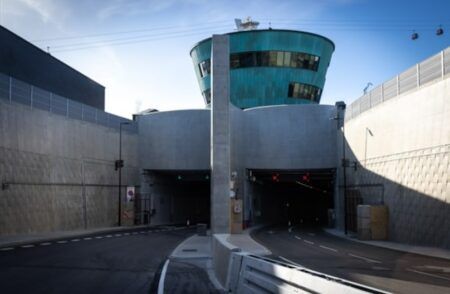The USA’s first-of-its-kind Innovation Accelerator has developed new technology components that visually capture below-ground assets to reduce time and cost for urban construction projects and utility management, all of which have a major impact on a city’s traffic management.
UI LABS aims to solve large-scale challenges by bringing universities and industry together with startups and government to accelerate the deployment of emerging technologies through collaboration. City Digital, a Chicago-based UI LABS collaboration, has developed the underlying technology components to create a new underground infrastructure mapping (UIM) platform, which will generate, organize, visualize, and store 3D underground infrastructure data, saving cities and utilities millions of dollars in construction and planning processes.
Using the City of Chicago as a testbed for the platform’s development, the pilot team is deploying the new technology to create an accurate 3D map of underground assets, such as water pipes, fiber optic lines, gas pipes, electrical lines, and legacy infrastructure, including transportation network cabling and induction loops, located in city streets and alleys. An engineering-grade, cloud-based data platform enables this critical infrastructure information to be securely stored and shared among city departments and utilities.
Many construction and utility projects involve digging up a city’s streets, usually causing a major impact on its traffic flow and transport management, so anything that will speed up this work will be of benefit to city authorities. As a result of inaccurate or obsolete data on below-ground assets, an underground utility line is hit on average every 60 seconds in the USA, according to the American Public Works Association. State governments have estimated the potential to unlock US$21 in value for every US$1 invested in underground asset management by reducing accidents, damages, and delays.
Led by City Digital partners Accenture, HBK Engineering and the City of Chicago, the pilot team has developed advanced scanning tools; a data capture system; mobile applications for use by construction and utility workers to capture data and update the system in real time; a data visualization application; and business model templates for cities to collect revenue.
Following the completion of the initial prototype last year on a Chicago construction site, the newly developed technology components will soon be deployed on a larger site in the city’s River North neighborhood, demonstrating the platform’s effectiveness in a real-world setting.
The UIM pilot’s technology and processes were developed by a broad consortium of government, industry, and academic partners. In addition to the pilot leads, the team includes: ComEd, Microsoft, Cityzenith, Esri, and the University of Illinois at Urbana-Champaign.
Future phases will seek to make the infrastructure work smarter by incorporating underground sensors, as that technology becomes cheaper and more scalable.
“The UIM pilot is a tangible demonstration of how taking a central role in the digital ecosystem can help deliver innovation through IoT,” said Jay Hedley, managing director and connected spaces lead at Accenture Mobility. “Connecting the physical equipment underground with this digital solution will help citizens by increasing the efficiency of both planning and delivery of infrastructure projects.”




